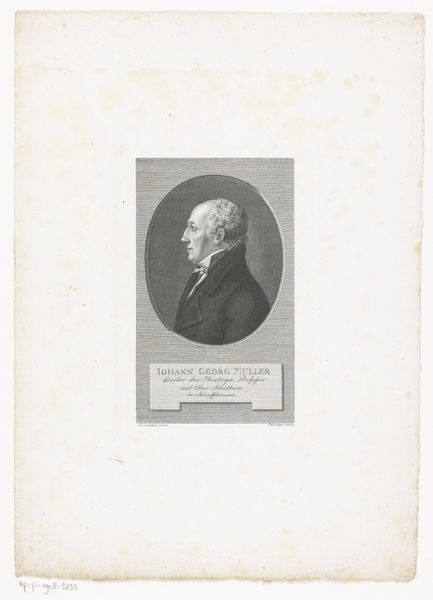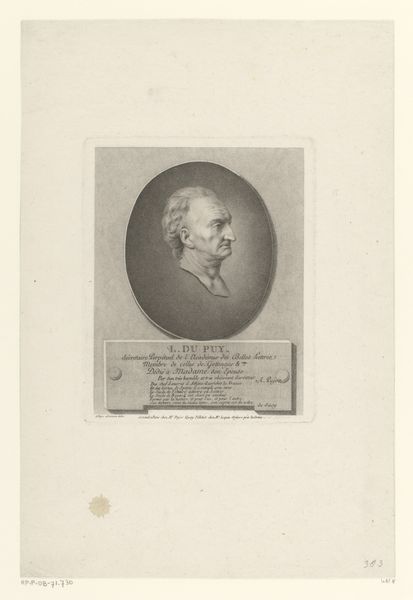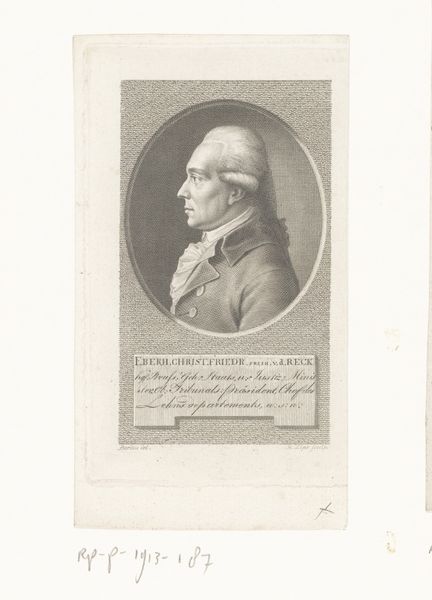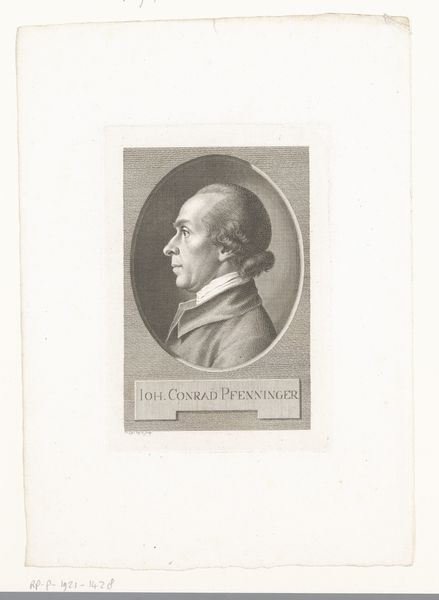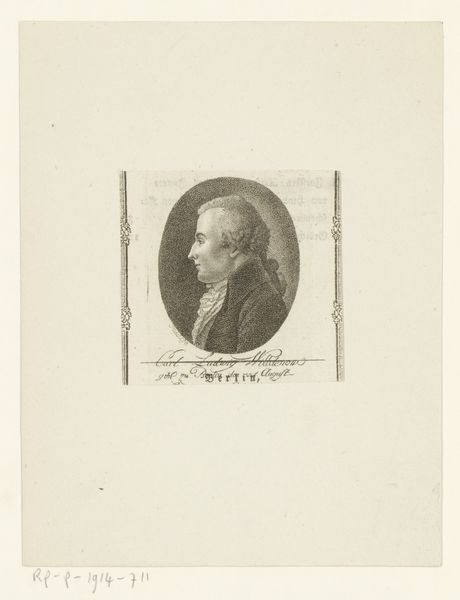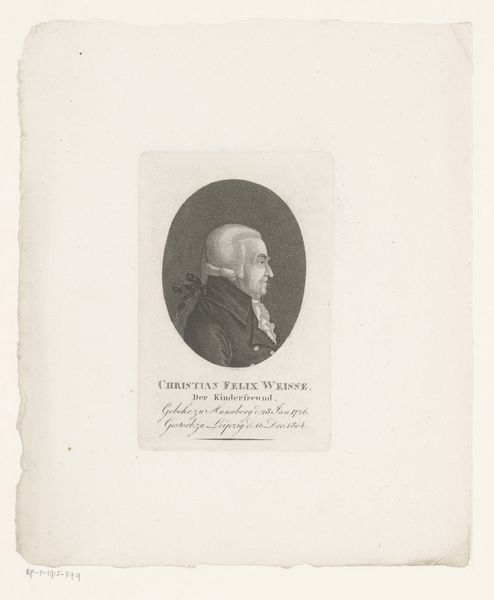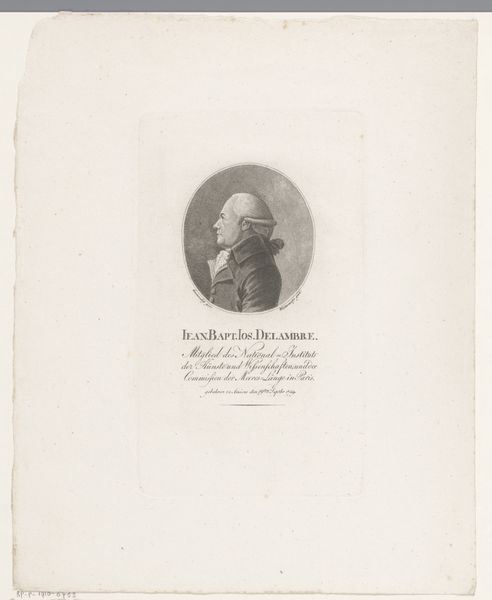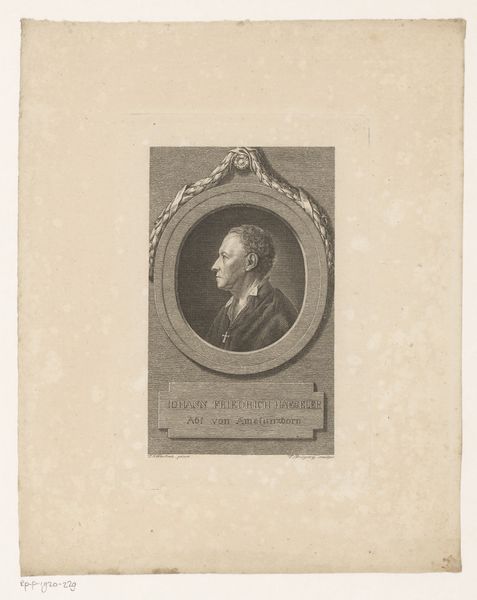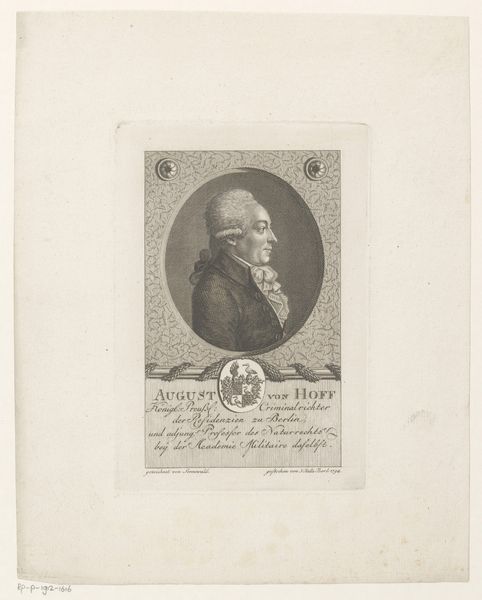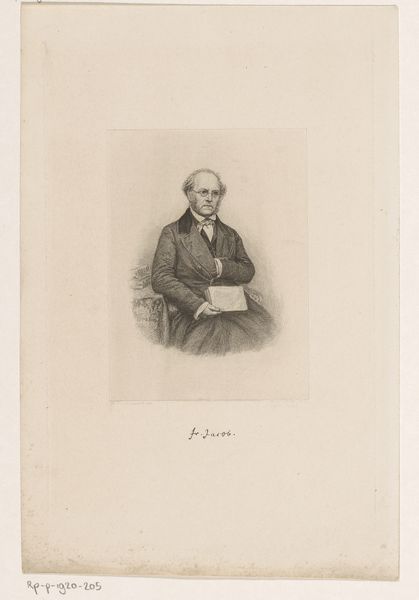
print, engraving
#
portrait
#
neoclacissism
# print
#
engraving
Dimensions: height 185 mm, width 137 mm
Copyright: Rijks Museum: Open Domain
Curator: Johann Heinrich Lips created this engraving, a print titled "Portret van Gregor von Feinaigle," sometime between 1768 and 1817. It's part of the Rijksmuseum collection. The fine lines of the engraving give it a restrained, classical feel. Editor: Restrained is definitely the word! It feels almost… distant? Cold, maybe. The profile view, the oval frame… it's all very formal and proper, in a way that keeps you at arm’s length. Curator: That formality speaks to the Neoclassical movement's focus on order and reason, mirroring the intellectual climate of the Enlightenment. Profiles, especially, were popular for their ability to convey the essence of an individual through idealized forms, hearkening back to ancient Roman portraiture. What associations does the subject evoke? Editor: For me, it evokes the notion of established power. Men like Gregor von Feinaigle – though he was born in Germany, he later spent a lot of time in countries with established Empires or royalty, for example Russia. I'd bet Feinaigle probably enjoyed the patronage of the elite and perhaps he even taught there. It seems portraits like this affirmed one's place within a rigid social hierarchy. Curator: Interesting observation. The choice of profile certainly adds a sense of decorum, but it might also invite more reflective consideration from the viewer, guiding the eye in contemplation of the mind, thought, and perhaps cultural symbolism in his stance. The very act of portraying someone grants a type of immortality. Lips has transformed the public image and enduring relevance of Feinaigle for generations to come. Editor: True, the act of representation is powerful. But whose story gets told? We have this engraving celebrating him, but I wonder what voices are missing? Curator: That's always a vital question to ask. However, the print itself becomes a symbol beyond Feinaigle himself, standing for larger historical movements. Editor: Ultimately it serves as a potent visual marker of an era, both for what it depicts and what it omits.
Comments
No comments
Be the first to comment and join the conversation on the ultimate creative platform.

